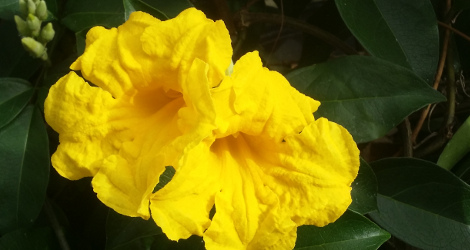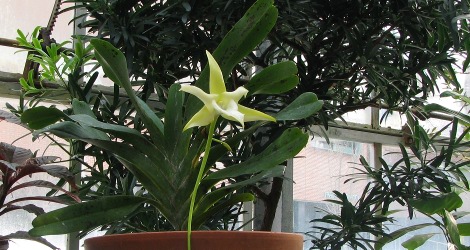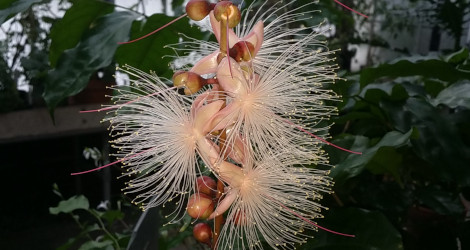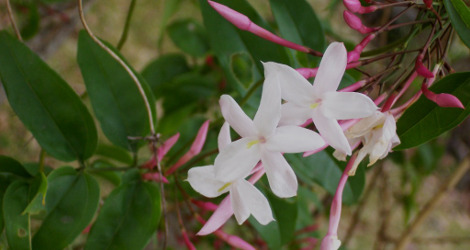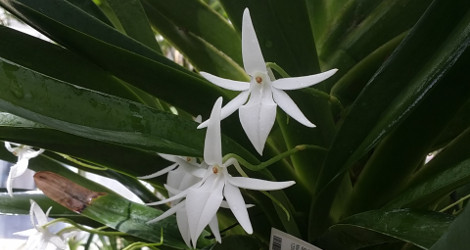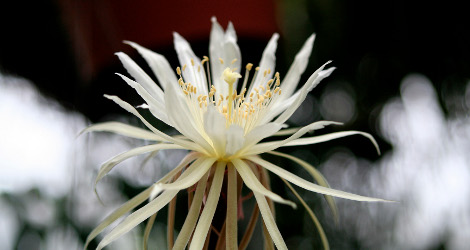SPECIAL COLLECTION:
Moth pollination (phalaenophily)
Among the more important moth pollinators are the hawk moths (Sphingidae). Their behaviour is similar to hummingbirds: they hover in front of flowers with rapid wingbeats. Most are nocturnal or crepuscular. So moth-pollinated flowers tend to be white, night-opening, large and showy with tubular corollas and a strong, sweet scent produced in the evening, night or early morning. A lot of nectar is produced to fuel the high metabolic rates needed to power their flight.
Other moths (Noctuids, Geometrids, Pyralids, for example) fly slowly and settle on the flower. They do not require as much nectar as the fast-flying hawk moths, and the flowers tend to be small (though they may be aggregated in heads).
Greenhouse Locator Map: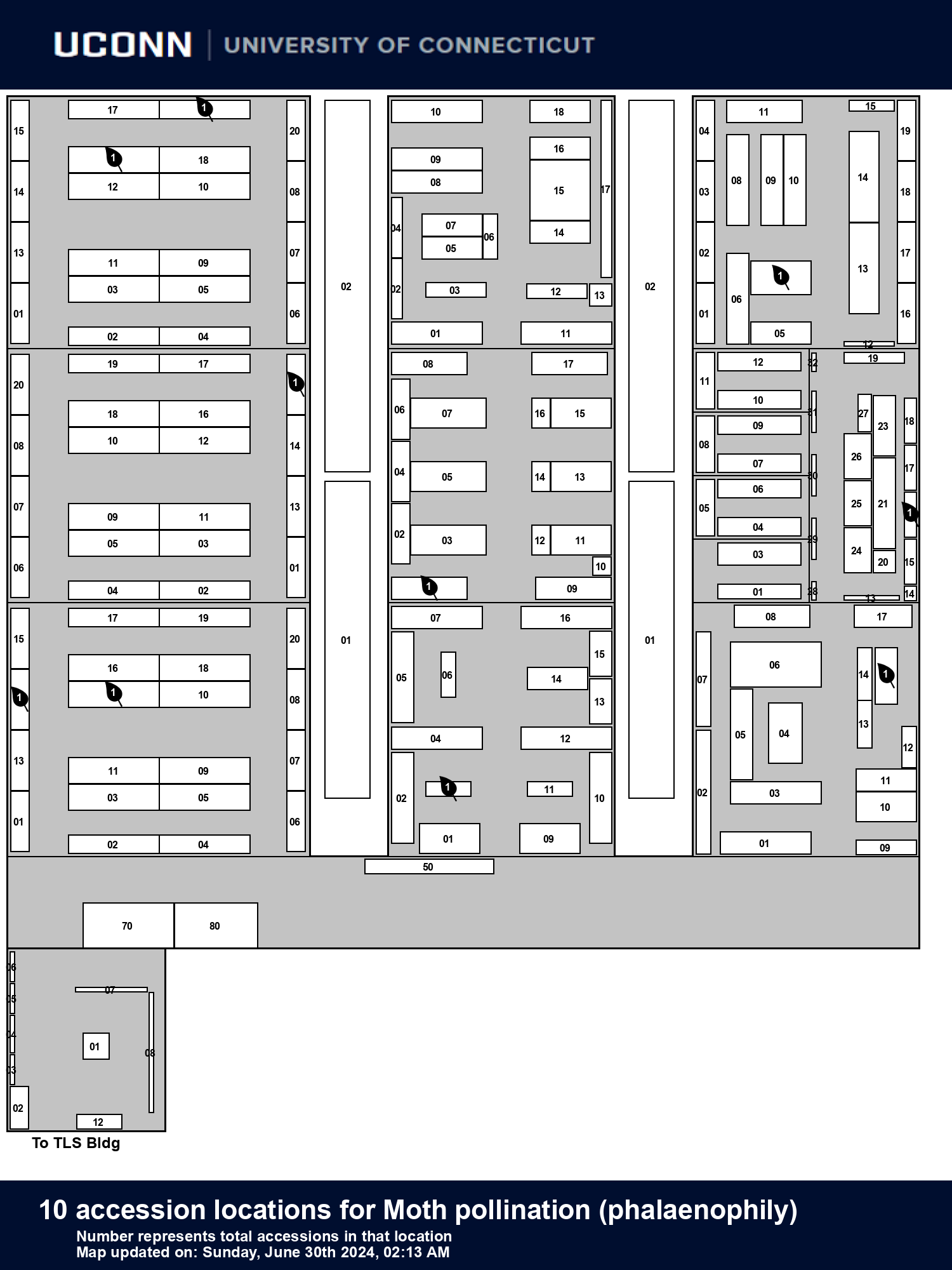
Greenhouse Locator Map:

data regenerated on Sat, 26 Jul 2025 02:13:44 -0400
10 Accessions:
Number in parentheses references locator map icons
- {1} Barringtonia racemosa - Powder Puff Tree - Lecythidaceae


- {2} Tetradenia riparia - Nutmeg Bush, Mochasma - Lamiaceae

- {3} Plumeria rubra - Frangipani - Apocynaceae


- {4} Quadrella cyanophallophora - Jamaican Caper - Capparaceae


- {5} Adenocalymma comosum - Yellow Trumpet Vine - Bignoniaceae



- {6} Jasminum polyanthum - Winter Jasmine - Oleaceae


- {7} Adansonia za - Malvaceae

- {8} Angraecum sesquipedale - Darwin's Orchid - Orchidaceae


- {9} Jumellea arachnantha - Spider Flowered Jumellea - Orchidaceae


- {10} Selenicereus wittii - Moonflower - Cactaceae

 W/C
W/C
W/C = Wild Collected
 = Currently Flowering
= Currently Flowering = Image(s) Available
= Image(s) Available = map available for this accession
= map available for this accession
 = voucher(s) on file at CONN for this accession
= voucher(s) on file at CONN for this accession = accession added within past 90 days
= accession added within past 90 days
